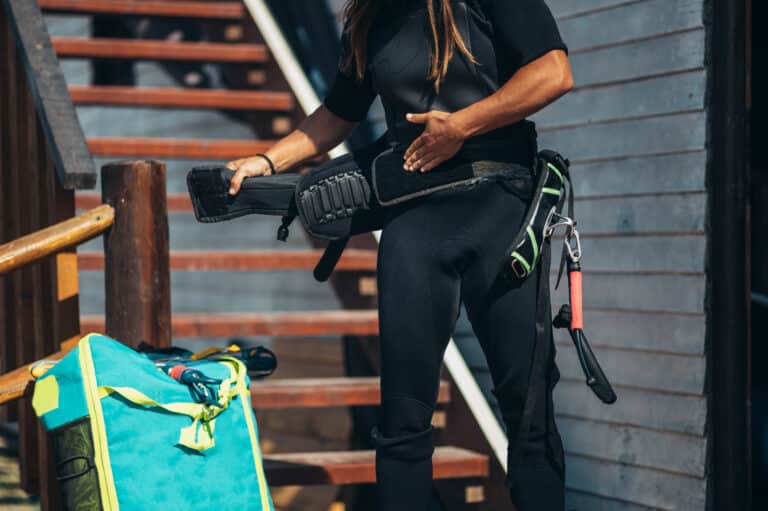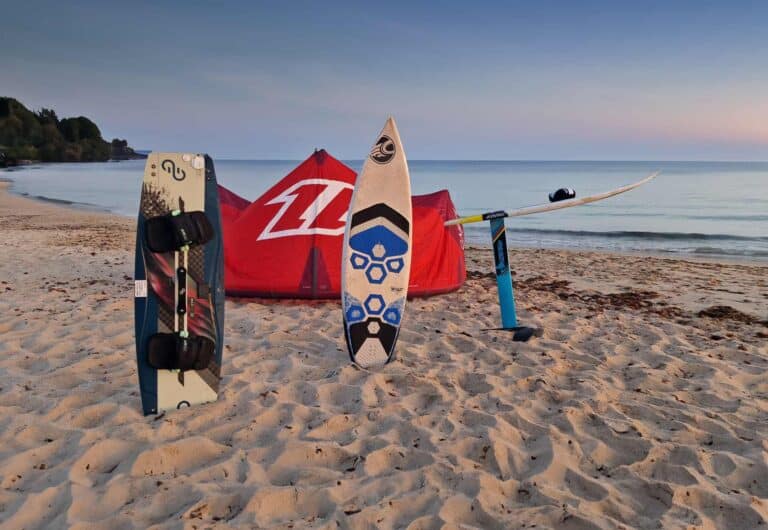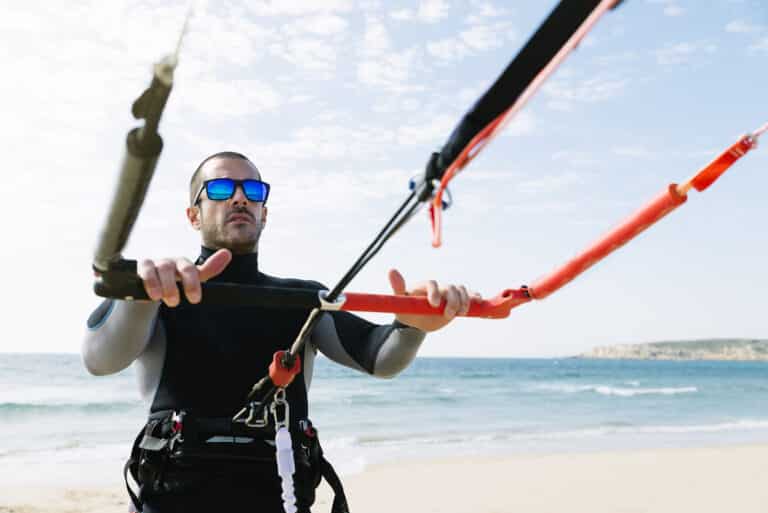Why the Right Kitesurf Harness is Essential
The kitesurf harness is one of the most important pieces of equipment for kitesurfers, whether you’re a beginner or an advanced rider. It connects your body to the kite and transfers the kite’s immense pulling forces while providing stability and control. Choosing the right harness can make the difference between an enjoyable kitesurfing session and an uncomfortable, energy-draining experience.
More importantly, an improperly chosen harness can lead to physical discomfort, such as back or rib issues. This guide explains the different types of harnesses, essential purchasing criteria, and provides helpful tips to help you find the perfect kitesurf harness for your style.
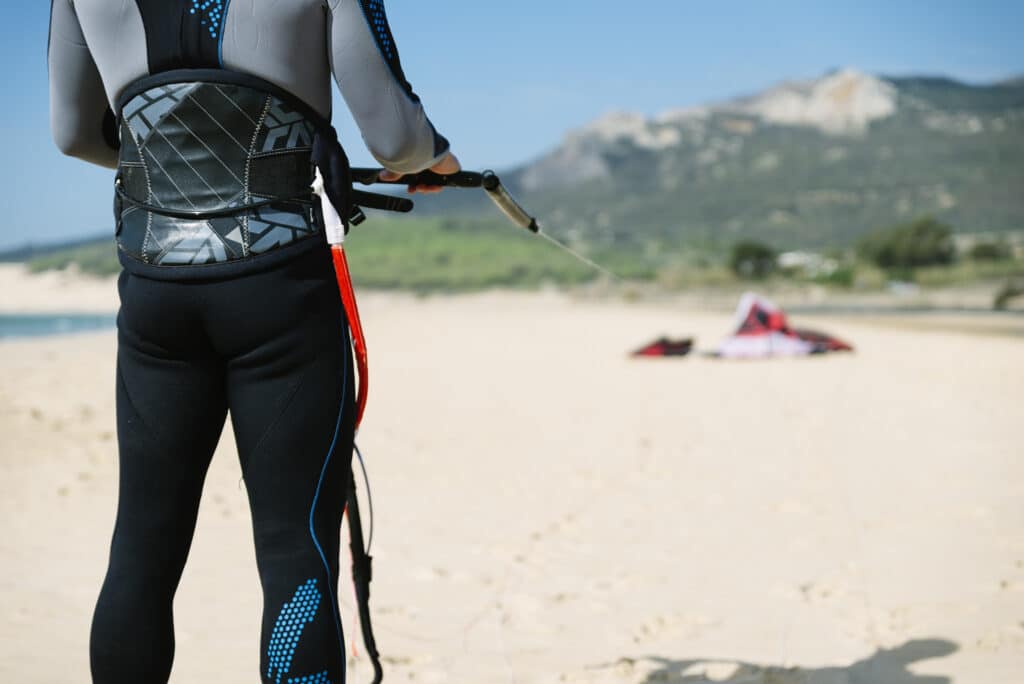
Which Kitesurf Harness Fits Your Kitesurfing Style?
Seat Harness: Ideal for Beginners
The seat harness is often used by beginner kitesurfers, as it has a lower anchor point and is secured with leg straps, preventing it from riding up. This is especially important because beginners often hold the kite in the 12 o’clock position, increasing the risk of an ill-fitting harness riding up and putting pressure on the upper body. The seat harness stays stable and distributes the kite’s pull more evenly.
Advantages of the Seat Harness:
- Stability: The leg straps keep the harness securely in place, which is essential for beginners.
- Comfort: The low position minimizes pressure on the upper body, making it helpful for longer sessions.
- Beginner-Friendly: It makes controlling the kite easier and helps find the correct body posture.
“A seat harness provides beginners with the stability they need and prevents uncomfortable pressure on the ribs, which often happens with ill-fitting harnesses.”
Kiteboarding-Shop.de
Disadvantages
Potential Discomfort Over Time: Especially for male kitesurfers, seat harnesses can become uncomfortable during long sessions.
Waist Harness: For Advanced Kitesurfers and Freestylers
Waist harnesses are popular among advanced kitesurfers due to their greater freedom of movement. These harnesses sit higher on the hips, allowing more flexible torso rotation, essential for tricks, jumps, and maneuvers. They offer more freedom, making them ideal for freestyle kiters. However, if not fitted correctly, they can ride up and create uncomfortable pressure on the ribs.
Advantages of the Waist Harness
Greater Mobility: The higher position allows for more flexible torso movements, especially important for tricks and maneuvers.
Better Control: The even distribution of the kite’s pull on the upper body enables a more upright riding position, giving more control over the kite.
“For experienced kiters seeking freedom of movement and flexibility, the waist harness is the best choice. However, it must fit well to prevent uncomfortable pressure on the ribs.”
Kitemagazin
Disadvantages
May Ride Up: Especially during longer sessions or when the kite is held in the 12 o’clock position, there is a risk of the harness riding up and putting pressure on the upper body.
Requires Precise Fit: A poorly fitting waist harness can make controlling the kite difficult and cause discomfort.
Hybrid Harness: Flexibility for Advanced Kiters
Hybrid harnesses combine the benefits of seat and waist harnesses. They offer the stability of a seat harness with the flexibility of a waist harness. A hybrid harness is ideal for kitesurfers who switch between different disciplines.
Advantages
Flexibility: Leg straps can be adjusted or removed as needed, allowing for stability or mobility.
Comfort: Provides necessary support for long sessions and tricks.
Disadvantages
Complex Handling: Hybrid harnesses often require many adjustments, which can be confusing for beginners.
Higher Price: Generally more expensive than pure seat or waist harnesses.
Buying Criteria: What Should You Look For?
Buying a kitesurf harness requires careful consideration, as choosing the right model significantly impacts your safety, comfort, and performance on the water. The harness connects your body to the kite and plays a crucial role in how effectively you can control the kite’s pull. To help you find the perfect kitesurf harness for your style, here are the key buying criteria to keep in mind:
Fit: Why the Right Size Matters
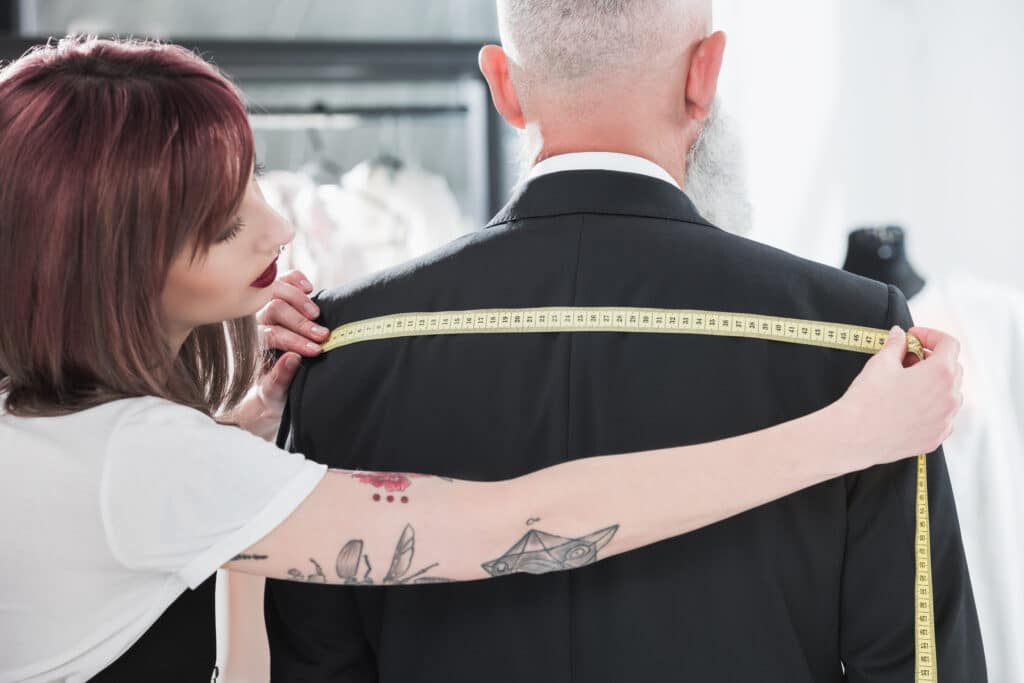
The right fit is undoubtedly the most crucial factor when choosing a kitesurf harness. An ill-fitting harness can not only limit your kite control but also lead to physical discomfort, such as back pain or even rib issues. If the kitesurf harness is too loose, it constantly shifts and restricts your freedom of movement. Conversely, if it’s too tight, it can create pressure points and press uncomfortably on your torso, which can lead to problems, especially during long sessions.
Size Guide for Different Kitesurf Harness Types:
Seat Harness: The seat harness should sit firmly on the hips, with the leg straps pulled tight to prevent shifting. These harnesses offer beginners stability and comfort, thanks to their lower sitting position.
Waist Harness: A waist harness should fit snugly around the waist without riding up. It offers more freedom of movement but requires an exact fit to prevent upper body restriction and ensure proper kite control.
Hybrid Harness: This combines the features of both seat and waist harnesses, allowing leg straps to be adjusted or removed as needed. Hybrid harnesses are popular among advanced riders who want versatility for different kiting styles.
Tip: When trying on a harness, make sure it’s comfortable—neither too tight nor too loose. Many manufacturers provide detailed sizing charts to help you find the perfect harness for your body measurements.
Material: Hardshell vs. Softshell
The material of your kitesurf harness plays a crucial role in its functionality and comfort. There are two main types: hardshell and softshell harnesses. Both have pros and cons, depending on your personal riding style.
Hardshell Kitesurf Harnesses
Hardshell harnesses are stiffer models that offer maximum support and stability. They are particularly suitable for kitesurfers who prefer freestyle maneuvers or kitesurfing in strong winds. The firm structure stabilizes the upper body, which is important for jumps and tricks. However, the downside is that they can press uncomfortably on the body during long sessions, leading to pressure points or even rib issues.
- Maximum stability and support.
- Ideal for freestyle riders and kitesurfers in strong winds.
- Can lead to pressure points during extended wear.
- Less flexible, which may become uncomfortable over time.
Softshell Kitesurf Harnesses
Softshell harnesses are softer and more flexible, adapting more naturally to the body’s shape. These harnesses offer greater comfort and freedom of movement, making them perfect for long sessions and riders who prioritize flexibility.
Compared to the stiffer hardshell harnesses, they are less rigid and distribute pressure more evenly, which is especially comfortable when spending extended periods on the water.
Softshell harnesses are characterized by their flexible structure, which allows them to stretch and bend with the body’s movements. This reduces the risk of pressure points, making softshell harnesses more comfortable for many kitesurfers, especially for those who perform less aggressive maneuvers or prefer relaxed sessions.
Advantages of Softshell Harnesses:
- Higher comfort: Especially during long water sessions, as they adapt better to the body.
- Flexibility: Their softer structure offers more freedom of movement and is less restrictive to natural body movements.
Ideal for long sessions: Softshell harnesses reduce pressure on sensitive areas, making them especially comfortable for kitesurfers spending long periods on the water.
Disadvantages
- Less support in strong winds or freestyle: Softshell models offer less structural support than hardshell harnesses. In strong winds or intense freestyle maneuvers, the lack of a rigid structure may limit control.
- Reduced stability: As softshell harnesses are softer, they don’t provide the same stability as hardshell models, making them less suitable for kiters who rely on maximum performance and control.
Top Brands and Models for Kitesurf Harnesses
The market for kitesurfing harnesses offers a wide variety of brands and models. Among the leading brands are:
| Brand | Features | Price Range | Recommended for |
|---|---|---|---|
| Mystic | High-quality construction, adjustable straps | Mid to High | All skill levels |
| Cabrinha | Durability, flexibility, lightweight | Medium | Beginners to Intermediate |
| Duotone | High performance, innovative technology | High | Intermediate to Professional |
| Ozone | Ergonomic design, good fit | Medium | All experience levels |
Mystic harnesses are known for their high-quality craftsmanship and innovative designs. Their harnesses feature durable materials, adjustable straps, and ergonomic padding that provide maximum comfort and safety. Mystic offers both seat and waist harnesses, suitable for various experience levels.
Cabrinha Harnesses offer a wide range of options for various skill levels. Known for their durability and flexibility, Cabrinha harnesses are a popular choice among kitesurfers. They are especially noteworthy for their lightweight designs, which enhance comfort and freedom of movement.
Duotone Harnesses combine comfort and performance, making them ideal for advanced kitesurfers. These harnesses offer excellent weight distribution and additional safety features that enhance both security and enjoyment on the water. Duotone focuses heavily on innovative technology and high-quality materials to produce some of the best harnesses on the market.
Ozone Harnesses are celebrated for their ergonomic design and excellent fit. They offer both waist and seat harnesses that cater to kitesurfers at all skill levels. Ozone harnesses are lightweight and provide an ideal balance between comfort and freedom of movement. Thanks to their high-quality materials, they are durable and perfect for riders who prioritize long-lasting performance. Their ergonomic design is particularly noteworthy, adapting optimally to the body to evenly distribute pressure and prevent fatigue.
Recommendations by Experience Level
- Beginners: Cabrinha and Ozone offer affordable and easy-to-use harnesses ideal for beginners.
- Intermediate: Duotone and Mystic offer advanced models with added safety features and higher performance.
- Professionals: High-end models from Duotone and Mystic are perfect for experienced kiters seeking maximum control and comfort.
Tips for Beginners and Advanced Riders
Selecting the right kitesurf harness is essential for comfort, safety, and performance. Different needs apply depending on your skill level, so here are some tips to help you make the most of your harness, no matter your experience.
Tips for Beginner
Choose a Seat Harness: Prioritize Stability
For beginners, a seat harness provides the necessary stability. Seat harnesses are secured with leg straps, preventing the harness from riding up. This stability allows you to focus on controlling the kite and mastering the basics without the hassle of readjusting the harness.
Advantage: Seat harnesses offer a stable position, making it easier for beginners to control the kite and focus on the board.
2. Prioritize Comfort: Snug But Not Restrictive
A well-fitting harness should sit snugly without causing pressure points or limiting movement. Comfort is key, as you’ll need to relax while kitesurfing to control the kite safely. Avoid harnesses that chafe or sit uncomfortably.
Tip: Try different models to find one that offers sufficient movement while remaining secure.
Advantage: Seat harnesses offer a stable position, making it easier for beginners to control the kite and focus on the board.
Master the Basics: Focus on Kite Control
Initially, concentrate on controlling the kite and getting a feel for the board. Your harness supports you in focusing on the essentials, helping you stay longer and more comfortably on the water.
Goal: Achieve a balance between kite control and body tension to learn kiting safely.
Tips for Advanced Riders
1. Switch to a Waist Harness: More Freedom for Tricks
Once you feel confident in the water and have mastered the basics, consider a waist harness. It provides significantly more freedom of movement, ideal for tricks, jumps, and freestyle maneuvers. Sitting higher on the waist, it allows more flexible upper body rotation.
Tip: Use this increased flexibility for advanced maneuvers and tricks, but always maintain control of the kite.
Optimize Fit: Avoid Pressure on the Ribs
Fit is crucial to avoid injury and discomfort. A poorly fitting waist harness can ride up and apply uncomfortable pressure on the ribs. Make sure your waist harness fits snugly at the waist without chafing or moving out of place.
Advantage: A well-fitting waist harness offers greater comfort and prevents pressure points and rib discomfort.
3. Choose the Right Material: Hardshell or Softshell?
Advanced riders should choose the material of their harness based on their riding style. If you prefer freestyle tricks and jumps, a hardshell harness provides maximum support. For longer sessions and relaxed riding, a softshell harness offers more comfort.
Tip: Decide if you’re more focused on dynamic maneuvers or long, relaxed sessions – and choose the appropriate harness material.
Maintenance Tips: Keep Your Harness in Top Condition

To ensure your kitesurf harness remains a reliable companion on the water, proper care is essential. Saltwater, sand, and sun can degrade the material and mechanisms over time. Regular cleaning and maintenance will keep your harness stable and functioning optimally. Here are some key maintenance tips to extend your harness’s lifespan:
- Nach jeder Session gründlich abspülen: Kitesurfen findet oft in Salzwasser statt, und Salz ist besonders schädlich für die Materialien deines Trapezes. Spüle es nach jeder Session gründlich mit Süßwasser ab, um Salz- und Sandrückstände zu entfernen.
- Dry properly: Allow your harness to dry completely before storing it to prevent mold growth.
- Regularly check buckles and hooks: Inspect buckles and hooks for signs of wear and replace them as needed to avoid potential injuries.
- Examine seams and straps for wear: Regularly check the seams and straps, as these can fray or tear under heavy use.
- Store in a cool, dry place: Keep your kitesurf harness in a cool, dry location to protect it from heat and moisture, preserving its materials.
